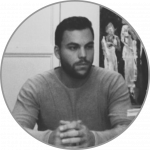Empowerment, a Practical Guide
Niklas Frewel
I would like to start this article on empowerment with a quote by Jos de Blok from his opening keynote at the Teal Around the World 2022:
Often we hear leaders say that some people are just lazy; they don’t want it
With this statement, Jos referred to one of the most crucial blockers for true change in organizations. A deeply embedded disbelieve that people have an innate drive to contribute, grow and flourish. For those who have been working with leaders in organizations, a statement you have surely encountered? It grasps my curious attention every time again, as it goes right to the core of the whole topic around transformation and (human) development: are people willing and able to change? And if they are, what is required to enable this change?
About the author

With his background in business and organizational psychology, Nik enjoys both deep transformation work with individuals and the complex dynamics of organizational change initiatives. Nik is convinced of the utility of bridging the gap between science and practice, bringing together the best of both worlds, which is why he also hosts lectures at various universities across Europe next to his passionate work as Senior consultant at atrain.
Curiosity leads Niklas to discover new connections and explore new approaches to empower people sustainably and create an environment for true breakthroughs.
Individuals and Potentials
Let’s start this reflection with Carl Jung’s idea of the “self”. In his philosophy, a person’s true journey exists in growing into one’s true self, in awakening one’s great inner potential. Jung often used the metaphor of the seed and the tree: In any seed there lies the amazing potential to become a strong and tall tree, providing shade and fertile ground for all life that surrounds it.
He posed that the quest to grow into the self can never be finished, where the beauty of the quest does not sit with the achievement of it, but with never giving up trying.
Individuals have within themselves an actualizing tendency, an inbuild proclivity toward growth and fulfillment.
–
Carl Rogers, 1980
Some Questions
There are many theorists and practitioners in recent years who also have come to similar conclusions as Jung did all these years ago. Now, let’s assume for a moment that the following assumption is true: humans tend to unleash their innate potential and are naturally inclined to contribute and manifest themselves meaningfully in reality.
What requirements are necessary for this tendency to materialize? And, speaking of organizations, are there ways to intentionally embed those requirements into the system for purposes of scale?
Since much has already been said and written about the role of the industrial revolution and its role in de-humanizing the workplace for the sake of turbocharging productivity growth (e.g., read “Humanocracy”), I will skip that chapter here.
Let’s focus instead on potential pathways to overhaul a deeply embedded legacy system of processes and beliefs which we still find in many of today’s organizations.
The first question that arises: If people do in fact want to contribute and are inclined to grow, why then can we frequently observe some sort of mass-lethargy and appearances of “laziness” in employees? Jos de Blok’s take on this: “Maybe they just got frustrated on the way by what they experienced in the organization.” Now the question is: Frustrated how? What might be missing for them to feel able to fully realize themselves?
3 easy pieces
A greatly promising concept that has emerged alongside those considerations is “Empowerment”.
A curious thing, as by now it is largely known by many, while at the same time it remains a magical myth as it has only been seen to work as promised in rare cases.
But let’s start from the beginning: what does empowerment promise?
By allowing for decision-making as close as possible to the point of value creation, we create a faster and far more adaptable system that is promised to yield better outcomes compared to traditional hierarchical structures of decision-making.
Sounds simple, does it not? Well, not quite.
The ever-growing complexity in our organizations, the fast-paced reality of today’s business reality, and the constantly shifting requirements in skills and knowledge make it hard for anyone person to keep up. Not an easy task, especially not easy in a system that has socialized individuals to think and act in entirely different ways for decades.
Not easy, but also not impossible.
Over the past years, we have learned much about the success factors of such endeavors. I am going to present three practical pieces, which can serve as a concrete guide for the start of your journey.

Piece 1: Clarity
Where does the journey go?
As a very first thing, we must ensure that every single person in the team or organization knows clearly where we are collectively headed.
Imagine you are on a ship: if you have a crew that does not have a common understanding of the ship’s destination, there will be lots of undirected busyness on deck, but no progress towards the desired lands. The unfortunate reality in many teams is that exactly that clarity is missing. Sure, there is the 78-pages long strategy paper as well as some generic headings on the intranet (boy, they sound great though!), but what has that to do with anything I do in my daily job?
It is a true art to break down strategic company-wide objectives into something that is tangibly useful for every single employee in the organization.
To solve this in detail, we would need much more time and space than this article allows for, but maybe two directions for the future will suffice for now.
First, the more individuals are involved in the strategy creation process (at least at the team/department level), the lower the need to explain or “translate” the strategy later on.
Second, not every person on the ship does the same thing; making sure everyone knows exactly what her/his role on the journey is and what their unique contribution looks like constitutes half the win already.
Piece 2: Trust
Trust is one of the most crucial cultural aspects within an organization. People are longing for true personal connection that allows them to show up as their authentic selves without any protective layers of armor and to own their vulnerabilities. Brené Brown’s TED talk on trust is the single most-watched speech on TED and for good reason.
As a society, we have entered a different era. In this new era, we are increasingly aware of human functioning and the days in which employees can be regarded as well-oiled machines are over. This development has by far not reached its full potential yet but shows a steady development in the right direction.
What can trust do for an organization, you may ask?
Well, here is one answer, let me explain. To stay competitive in the market, organizations need to innovate at an ever-increasing pace not to be left behind by an emergent competitor. As soon as we talk about innovation, we enter the realm of the “unknown”.
As we usually have little knowledge of the unknown, we must rely on experiments and trials and errors to make progress.
This means we need to take risks!
In an organization where deliberate risk-taking is rewarded and the entrepreneurial spirit is nourished, we will naturally find more innovation. What do we need for this? The (psychological) safety to know that potential mistakes will not be punished, that taking (even unsolicited) initiative will not be regarded as “falling out of line”.
Of course, in practice, it is far more complex than this. But if you already got curious to learn more about this, why don’t you check out Amy Edmundson’s great read “The fearless organization”?
Piece 3: Support
Empowerment is often mistaken as a synonym for accountability.
While accountability is an important aspect of the concept, it is only one side of the coin.
The other vital element of it is responsibility.
Response-ability (the ability to respond) is related to the skills, competencies, and all the knowledge required to successfully act in an empowered manner.
As Robert Greene writes in “Mastery”, power is having the means to deliberately influence your environment.
Those means are divided into two parts: first, the freedom, and second, the ability to do so. This makes a case for a much-discussed topic in organizations for a long time, which is the idea of lifelong learning.
By steadily increasing one’s level of skill and competence, a person makes him/herself more desirable in the eyes of others (employers, team-mates, etc.) and will consequently be offered more and better opportunities – a greater level of “freedom”, if you will.
Your life is the fruit of your own doing. You have no one to blame but yourself.
–
Joseph Campbell
As leaders, our task is to provide a ground for people to learn and develop, offering the right opportunities at the right time and supporting people on their journey to the best of our abilities.
Hence, the primary task of leadership shifts increasingly from “managing, approving, and predicting” towards:
“supporting, coaching, and enabling”.
About the author






